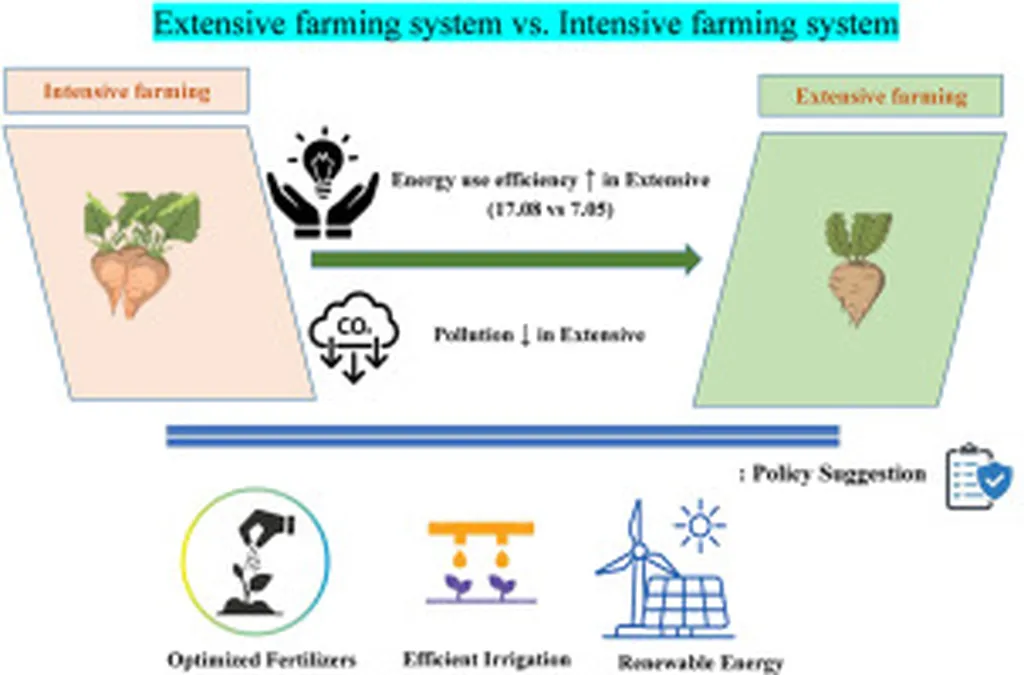In the heart of Iran’s agricultural landscape, a groundbreaking study is shedding light on the intricate balance between energy use, economic viability, and sustainability in sugar beet production. Published in the journal ‘Agrotechniques in Industrial Crops’, the research led by Rahim YarAhmadi from the Department of Production Engineering and Plant Genetics at Shahid Chamran University of Ahvaz, offers a comprehensive analysis that could reshape the future of this vital industrial crop.
The study employs the Material and Energy Flow Cost Accounting (MEFCA) method, aligning with ISO 14051 standards, to dissect every stage of sugar beet production. By scrutinizing data from the 2022-2023 agricultural year, the researchers uncovered critical insights into energy consumption and costs, paving the way for enhanced sustainability and economic efficiency.
“Our findings reveal that while sugar beet production in Iran is currently economically and energetically viable, there are significant areas for improvement,” YarAhmadi explains. The study found that the average energy input to sugar beet agro-ecosystems was 52,410 MJ per hectare, with energy losses totaling 102,201 MJ per hectare. However, the positive energy output from the harvested crop was a substantial 1,243,200 MJ per hectare, highlighting the crop’s potential for energy generation.
One of the most striking revelations was that over 99% of energy losses were attributed to sugar beet loss during harvest. This finding underscores the urgent need for improved harvesting techniques and advanced machinery to minimize waste and optimize energy use.
The economic implications of the study are equally compelling. With average production costs amounting to $1,192 per hectare and a gross production value of $4,651 per hectare, the net income stands at $3,458 per hectare, resulting in a benefit-cost ratio of 3.9. Labor costs emerged as the highest share of production expenses, suggesting that automation and efficient labor management could significantly enhance profitability.
The research also highlights the importance of maintaining subsidies for energy carriers and other inputs to sustain the economic viability of sugar beet production. “Our analysis shows that without these subsidies, the economic landscape could shift dramatically,” YarAhmadi notes.
The study’s recommendations for improving sustainability and optimizing sugar beet production are both practical and forward-thinking. These include reducing harvest losses through improved techniques and machinery, optimizing energy use through efficient irrigation practices, minimizing pesticide application, managing labor costs via automation, and investing in research and development to introduce innovative technologies.
The commercial impacts of this research are far-reaching. For the agriculture sector, the findings offer a roadmap for enhancing energy productivity and economic efficiency, ultimately boosting profitability and sustainability. The study’s emphasis on reducing energy losses and optimizing resource use aligns with global trends towards more sustainable and efficient agricultural practices.
As the agricultural industry grapples with the challenges of climate change, resource scarcity, and economic pressures, this research provides a timely and valuable contribution. By offering actionable insights and practical recommendations, it sets the stage for a more sustainable and economically viable future for sugar beet production in Iran and beyond.
The study’s publication in ‘Agrotechniques in Industrial Crops’ underscores its relevance and significance within the agricultural community. As researchers and industry professionals digest these findings, the potential for transformative change in sugar beet production becomes increasingly apparent. The journey towards enhanced sustainability and economic viability has begun, and the insights from this research will undoubtedly shape the future of the field.

